ما هو سرطان البروستاتا؟
سرطان البروستاتا مرض خطير يصيب آلاف الرجال في منتصف العمر أو أكبر كل عام. تحدث حوالي 60 في المائة من الحالات لدى الرجال الذين تزيد أعمارهم عن 65 عامًا. وتقدر جمعية السرطان الأمريكية (ACS) أنه سيتم تشخيص 174،650 رجلاً أمريكيًا حديثًا بهذه الحالة في عام 2019.
البروستاتا هي غدة صغيرة توجد في أسفل بطن الرجل. يقع تحت المثانة ويحيط بالإحليل. ينظم هرمون التستوستيرون البروستاتا وينتج السائل المنوي. السائل المنوي هو المادة التي تحتوي على الحيوانات المنوية التي تخرج من مجرى البول أثناء القذف.
عندما يكون لدينا نمو غير طبيعي وخبيث للخلايا – وهو ما يسمى بالورم – في البروستاتا، فإنه يسمى سرطان البروستاتا.
يمكن أن ينتشر هذا السرطان إلى مناطق أخرى من الجسم. وفي هذه الحالة، نظرًا لأن السرطان يتكون من خلايا من البروستاتا، فلا يزال يطلق عليه سرطان البروستاتا.
وفقًا لمؤسسة رعاية المسالك البولية، فإن سرطان البروستاتا هو السبب الرئيسي الثاني لوفيات الرجال بالسرطان في الولايات المتحدة.
ما هي أنواع سرطان البروستاتا؟
جميع سرطانات البروستاتا تقريبًا هي سرطانات غدية (أورام خبيثة). يبدأ هذا النوع من السرطان في خلايا الغدد التي تصنع الإفرازات. قد تتطور أنواع أخرى من السرطانات في البروستاتا إلا أن هذا أمر نادر. مثل:
- سرطانات الخلايا الصغيرة.
- سرطانات الخلايا الانتقالية.
- أورام الغدد الصماء العصبية.
- الأورام اللحمية (ساركوما).
من قد يكون مصابا بسرطان البروستاتا؟
الرجال الذين تزيد أعمارهم عن 55 عامًا هم أكثر عرضة للإصابة بالمرض. تزداد فرص إصابتك بسرطان البروستاتا مع تقدمك في العمر. في الواقع، 60٪ من حالات سرطان البروستاتا تصيب الرجال فوق سن 65. تزداد احتمالات الإصابة في الحالات التالية:
- العرق (الرجال السود هم الأكثر عرضة للخطر).
- التاريخ العائلي للإصابة بسرطان البروستاتا.
- السمنة.
- التدخين.
ما الذي يسبب سرطان البروستاتا؟
الخبراء غير متأكدين من سبب تحول بعض الخلايا في غدة البروستاتا إلى خلايا سرطانية (خبيثة). ولكن يبدو أن الأصول الوراثية تلعب دورًا. على سبيل المثال:
- تزداد احتمالية إصابتك بسرطان البروستاتا مرتين أو ثلاث مرات إذا كان والدك أو أخيك أو ابنك مصابًا بالمرض.
- جينات سرطان الثدي المتحورة الموروثة (BRCA1 وBRCA2) والطفرات الجينية الأخرى تساهم في عدد صغير من سرطانات البروستاتا.
- يمكن أن يلعب المكان الذي تعيش فيه أيضًا دورًا في خطر الإصابة بسرطان البروستاتا.
في أي سن يظهر سرطان البروستاتا
كما ذكر أعلاه، يعد العمر عامل خطر رئيسي للإصابة بسرطان البروستاتا. يحدث هذا المرض غالبًا عند الرجال الأكبر من 65 عامًا. ويحدث في حوالي 1 من كل 14 رجلًا تتراوح أعمارهم بين 60 و69 عامًا.
ما هي أعراض سرطان البروستاتا؟
نادرًا ما يسبب سرطان البروستاتا في مراحله المبكرة أعراضًا. قد تحدث هذه المشاكل مع تقدم المرض:
- الحاجة المتكررة، والعاجلة أحياناً، للتبول، خاصة في الليل.
- ضعف تدفق البول أو التدفق الذي يبدأ ويتوقف.
- التبول المؤلم (عسر البول).
- سلس البراز (الأمعاء).
- القذف المؤلم وعدم القدرة على الانتصاب (ED).
- دم في السائل المنوي أو البول.
- آلام أسفل الظهر وألم في الفخذ وألم في الصدر.
- تنميل في الساق أو القدمين.
هل مشاكل البروستاتا دائما علامة على سرطان البروستاتا؟
ليست كل حالات النمو في البروستاتا سرطانية، ولا تشير جميع مشاكل البروستاتا إلى السرطان. تشمل الحالات الأخرى التي تسبب أعراضًا مشابهة لسرطان البروستاتا ما يلي:
- تضخم البروستاتا الحميد (BPH): في مرحلة ما، سيصاب كل رجل تقريبًا بتضخم البروستاتا الحميد (BPH). تؤدي هذه الحالة إلى تضخم غدة البروستاتا ولكنها لا تزيد من خطر الإصابة بالسرطان. تضغط الغدة المتورمة على مجرى البول وتمنع تدفق السائل المنوي والبول. يمكن أن تساعد الأدوية، والجراحة في بعض الأحيان.

- التهاب البروستاتا: الرجال الذين تقل أعمارهم عن 50 عامًا هم أكثر عرضة للإصابة بالتهاب البروستاتا والتهاب وتورم غدة البروستاتا. غالبًا ما تكون العدوى البكتيرية هي السبب. تشمل العلاجات المضادات الحيوية أو الأدوية الأخرى.
العلامات المبكرة لسرطان البروستاتا
يمكن أن يكون أي من الأعراض المذكورة أعلاه أول مؤشر على إصابتك بسرطان البروستاتا، إلا أن المرجح أن تظهر الأعراض البولية مبكرًا أكثر من الأعراض الأخرى.
من المهم أن تضع في اعتبارك أن معظم هذه الأعراض يمكن أن تكون ناجمة عن حالات أخرى غير سرطانية. تشمل هذه الحالات تضخم البروستاتا الحميد (BPH) والتهاب البروستاتا.
لذلك، ومع أنه من المهم مراقبة أي أعراض قد تكون لديك، تذكر أن هناك احتمالًا جيدًا بأنها ليست بسبب السرطان.
ولكن يجب الانتباه إلى أن أي من هاتين الحالتين لا تؤدي إلى ظهور الدم في البول. فإذا كانت لديك دم في البول، فاتصل بطبيبك على الفور.
قد يكون الدم في البول ناتجًا عن شيء آخر غير السرطان، ولكن من الجيد تشخيصه في أسرع وقت ممكن.
فحص وتشخيص سرطان البروستاتا
غالبًا ما يعتمد فحص سرطان البروستاتا على تفضيلاتك الشخصية. وهذا إلى حد كبير بسبب أن معظم سرطانات البروستاتا تنمو ببطء ولا تسبب أية مشاكل صحية.
ويرجع ذلك أيضًا إلى أن نتائج اختبار مستضد البروستاتا النوعي (PSA)، والتي يمكن أن تكون جزءًا من الفحص، قد تؤدي إلى تشخيص خاطئ للسرطان. لكل من هذين السببين، قد يتسبب الفحص في قلق غير ضروري وعلاج غير ضروري.
توصيات الفحص
لدى جمعية السرطان الأمريكية ACS توصيات فحص للرجال مع تقدمهم في السن. يوصون خلال الفحص السنوي، بأن يتحدث الأطباء مع الرجال من أعمار معينة حول إيجابيات وسلبيات فحص سرطان البروستاتا. يوصى بهذه المحادثات للأعمار التالية وفق ما يلي:
- العمر 40: للرجال المعرضين لخطر كبير، وهم الذين لديهم أكثر من قريب من الدرجة الأولى – الأب أو الأخ أو الابن – الذين أصيبوا بسرطان البروستاتا في سن أقل من 65.
- العمر 45: للرجال المعرضين لخطر كبير، مثل الرجال الأمريكيين من أصل أفريقي والرجال الذين تم تشخيص قريب من الدرجة الأولى لديهم في سن أقل من 65.
- العمر 50: للرجال المعرضين بشكل متوسط لخطر الإصابة بسرطان البروستاتا، والذين يتوقع أن يعيشوا 10 سنوات أخرى على الأقل.
توصي فرقة عمل الخدمات الوقائية الأمريكية (USPSTF) الآن الرجال الذين تتراوح أعمارهم بين 55 و69 عامًا بأن يقرروا بأنفسهم ما إذا كانوا سيخضعون لاختبار مستضد البروستاتا النوعي (PSA)، بعد التحدث مع طبيبهم.
تخلص USPSTF إلى أن الفوائد المحتملة للفحص المستند إلى PSA للرجال الذين تتراوح أعمارهم بين 70 وما فوق لا تفوق الأضرار المتوقعة.
أدوات التشخيص
إذا قررت أنت وطبيبك أن فحص سرطان البروستاتا هو خيار جيد بالنسبة لك، فمن المحتمل أن يقوم طبيبك بإجراء فحص بدني ومناقشة تاريخك الصحي. سيجرون أيضًا اختبارًا واحدًا أو أكثر مما يلي:
- فحص المستقيم الرقمي (DRE): مع هذا الفحص، سيقوم طبيبك بإدخال إصبعه في المستقيم لفحص البروستاتا. يمكن أن يشعروا إذا كان هناك أي كتل صلبة على غدة البروستاتا يمكن أن تكون أورامًا.
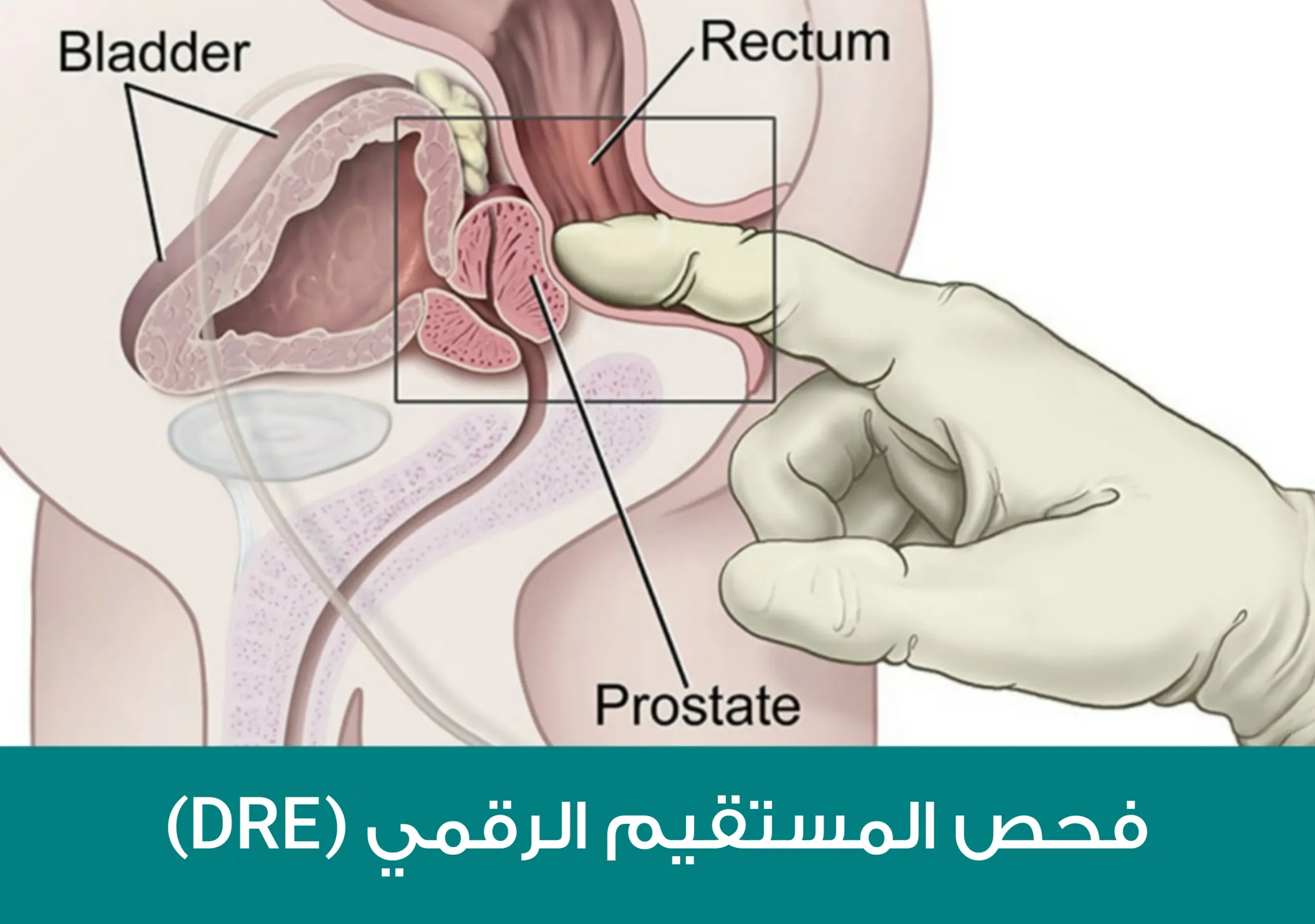
- اختبار مستضد البروستاتا النوعي (PSA): يكتشف اختبار الدم هذا مستويات الـ PSA، وهو بروتين تنتجه البروستاتا.
- خزعة البروستاتا: قد يطلب طبيبك أخذ خزعة للمساعدة في تأكيد تشخيص سرطان البروستاتا. لأخذ الخزعة، يقوم مقدم الرعاية الصحية بإزالة قطعة صغيرة من غدة البروستاتا لفحصها.
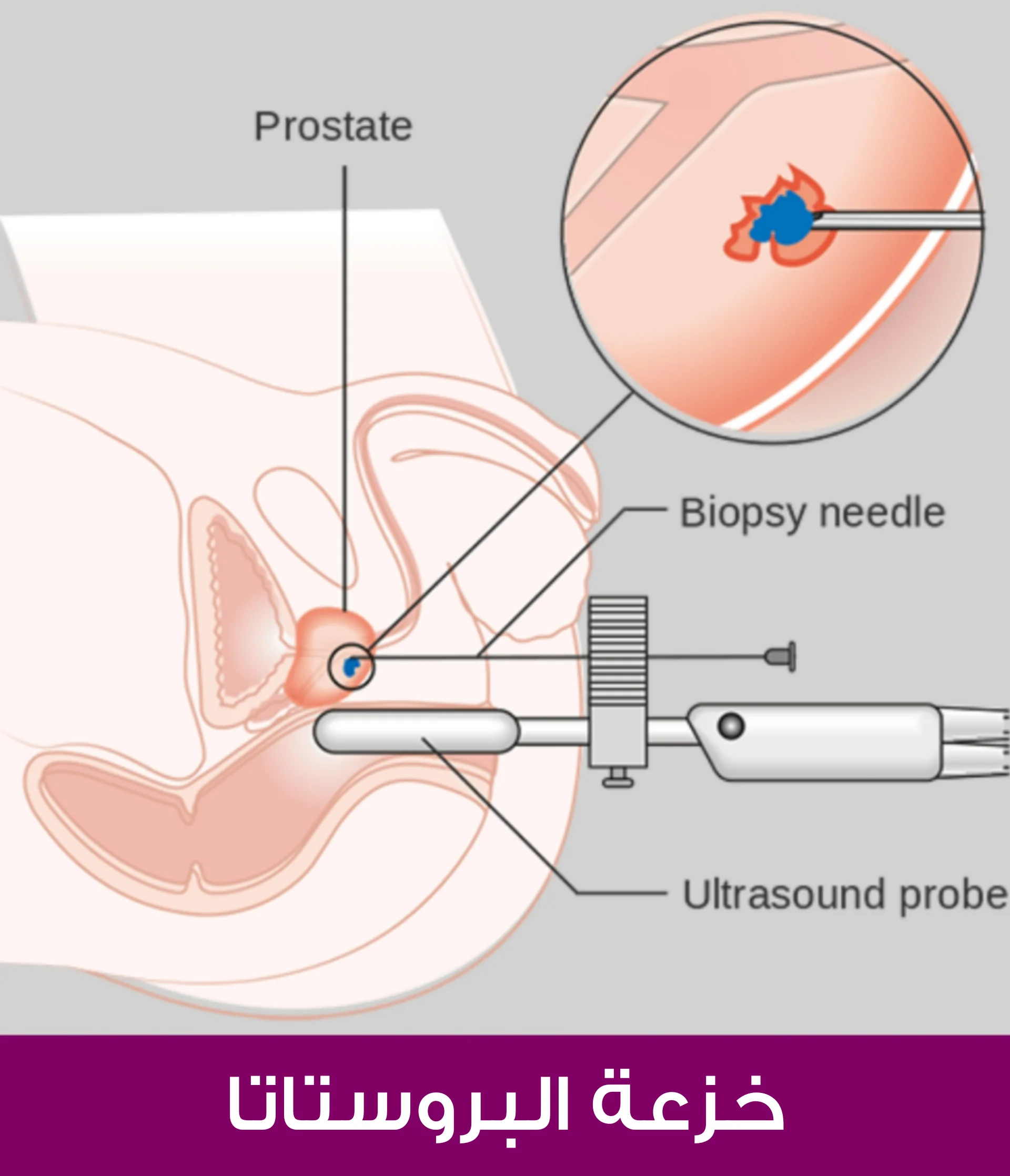
- اختبارات أخرى: قد يقوم طبيبك أيضًا بإجراء فحص بالرنين المغناطيسي أو الأشعة المقطعية أو فحص العظام.
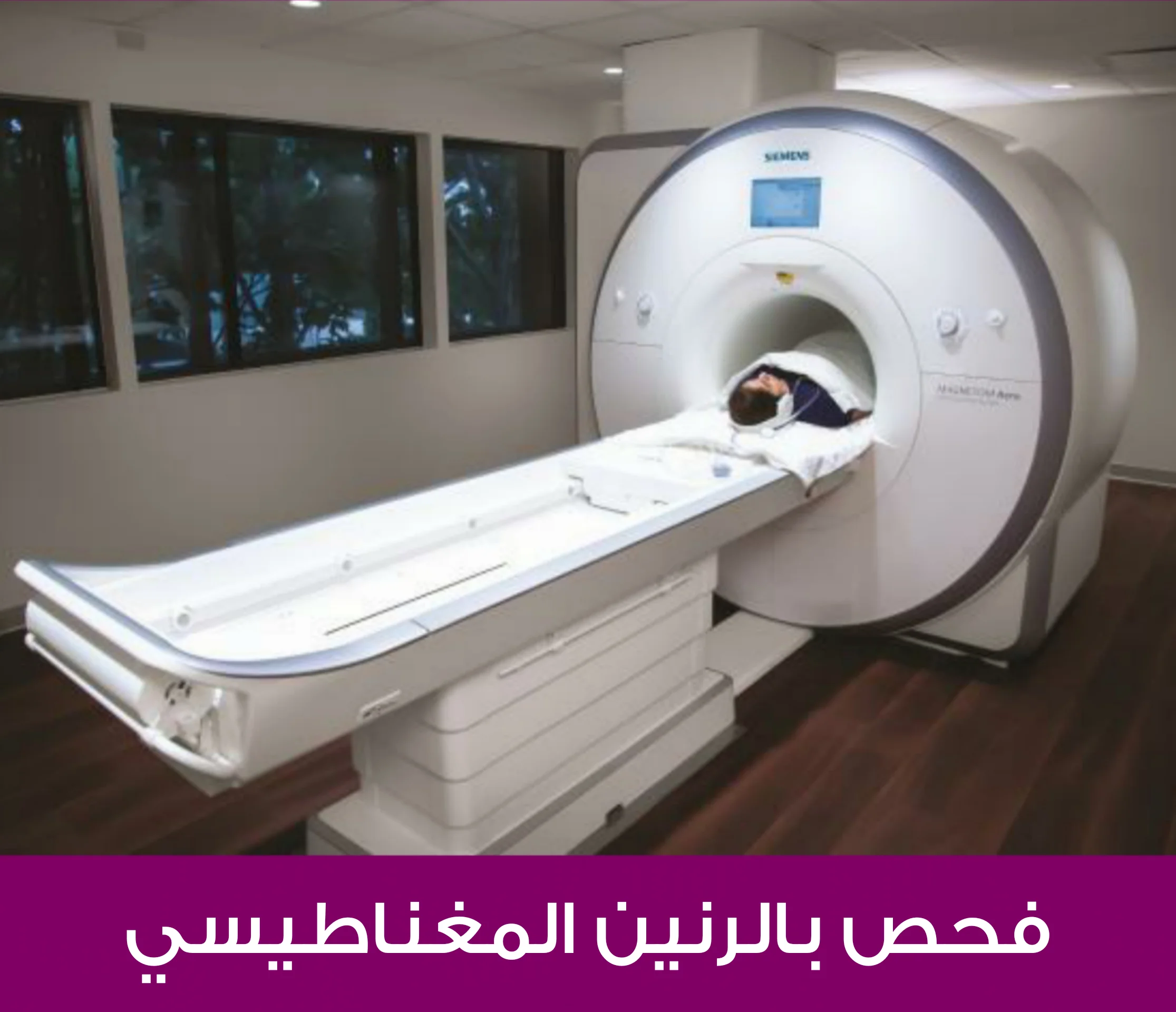
- سيناقش طبيبك معك نتائج هذه الاختبارات وسيقدم توصيات بشأن أي خطوات تالية قد تكون مطلوبة.
اختبار مستضد البروستاتا النوعي PSA
يتحقق اختبار مستضد البروستاتا النوعي من كمية مستضد البروستاتا النوعي في دمك. إذا كانت المستويات مرتفعة، فقد يعني ذلك أنك مصاب بسرطان البروستاتا.
ومع ذلك، فهناك العديد من الأسباب التي تجعلك تمتلك كمية كبيرة من المستضد البروستاتي النوعي في دمك، لذلك قد تؤدي نتائج الاختبار إلى تشخيص خاطئ وعلاج غير ضروري.
لذلك، توصي USPSTF الآن الرجال الذين تتراوح أعمارهم بين 55 و69 عامًا بأن يقرروا بأنفسهم ما إذا كانوا سيخضعون لاختبار PSA، بعد التحدث مع طبيبهم.
ومع ذلك، لا يزال اختبار المستضد البروستاتي النوعي مناسبًا في حالات معينة، مثل الرجال المعرضين لخطر إصابة مرتفع بسرطان البروستاتا. أيضًا، إذا كان لديك بالفعل حالة مؤكدة من سرطان البروستاتا، فلا يزال هذا الاختبار معتمدًا لتحديد مرحلة السرطان أو تصنيفه.
قبل أن تفكر في إجراء اختبار الدم PSA، تحدث إلى طبيبك حول المخاطر والفوائد.
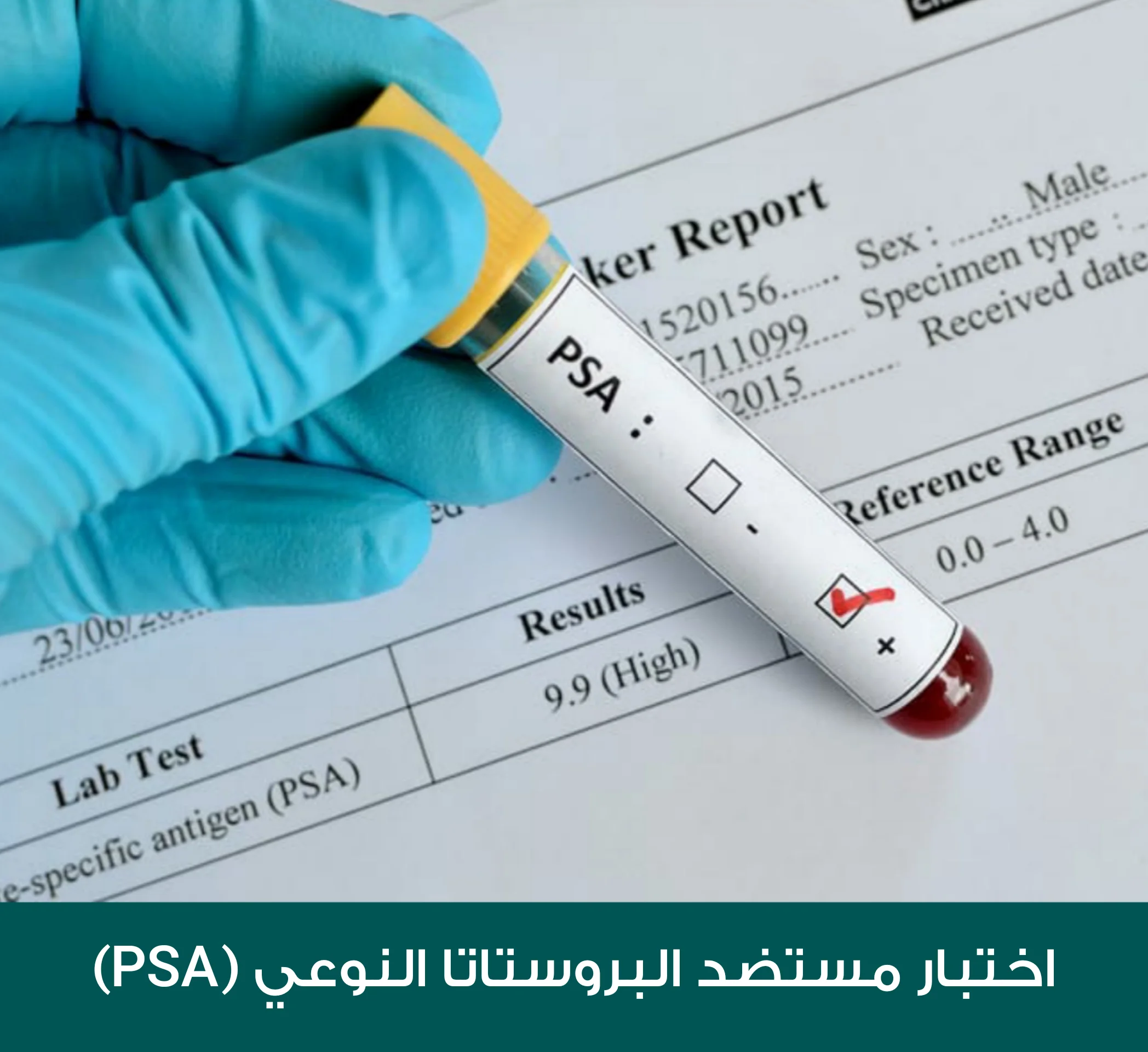
مقياس جليسون
إذا كنت قد خضعت لخزعة البروستاتا، فستحصل على نتيجة غليسون. يستخدم علماء الأمراض هذه النتيجة لتصنيف درجة خلايا سرطان البروستاتا. يشير التصنيف إلى أي مدى تبدو الخلايا غير الطبيعية مثل السرطان، ومدى عدوانية نموها.
تعني درجة جليسون الأقل من ستة أن خلاياك لا تظهر عليها علامات الإصابة بالسرطان، لذا فإن خطر إصابتك منخفض. إذا كانت درجاتك سبعة أو أعلى، فمن المحتمل أن ينظر طبيبك إلى درجاتك ومستوى PSA الخاص بك لتقييم الخلايا.
على سبيل المثال، تعني درجة جليسون 7، مع مستوى PSA بين 10 إلى 20 نانوجرام / مل، أنه تم التعرف على الخلايا السرطانية – ولكن من المحتمل أن يكون السرطان غير عدواني، مع خلايا بطيئة النمو.
تشير درجة Gleason التي تبلغ 8 أو أعلى، مع مستويات PSA أكبر من 20 نانوجرام / مل، إلى ورم أكثر تقدمًا. هذا يعني أن خطر إصابتك بسرطان شديد أعلى.

ما هي مراحل سرطان البروستاتا؟
يستخدم مقدم الرعاية الصحية الخاص بك درجات Gleason وGrade Group لتحديد مرحلة سرطان البروستاتا بناءً على عدوانيته المتوقعة. للحصول على هذه المعلومات، يقوم أخصائي علم الأمراض بما يلي:
- يخصص درجة لكل نوع من الخلايا في عينتك. يتم تصنيف الخلايا على مقياس من ثلاثة (بطيء النمو) إلى خمسة (عدواني). تعتبر العينات التي يتم تصنيفها في نطاق واحد إلى اثنين أنسجة طبيعية.
- تجمع الدرجتان الأكثر شيوعًا للحصول على درجة Gleason (تتراوح من ستة إلى عشرة).
- تستخدم درجة جليسون لوضعك في مجموعة درجات تتراوح من واحد إلى خمسة. تضعك درجة غليسون المكونة من ست درجات في المجموعة الأولى (سرطان بطيء النمو وقد لا يتطلب علاجًا). تضعك الدرجة التاسعة أو أعلى في المجموعة الخامسة (سرطان عنيف وسريع النمو ويتطلب علاجًا فوريًا). العينات التي تحتوي على كمية أكثر من الخلايا الأكثر عدوانية يتم تصنيفها في مجموعة أعلى.
كيف يتم التعامل مع سرطان البروستاتا أو علاجه؟
لا يحتاج بعض الأشخاص إلى العلاج أبدًا لأن السرطان ينمو ببطء ولا ينتشر. مع العلاج، يكون معظم سرطان البروستاتا قابلاً للشفاء بدرجة كبيرة. تشمل خيارات العلاج ما يلي:
- المراقبة النشطة: باستخدام هذا النهج، يمكنك إجراء فحوصات ومسح ضوئي وخزعات كل سنة إلى ثلاثة سنوات لمراقبة نمو السرطان. تعمل المراقبة النشطة بشكل أفضل إذا كان السرطان موجوداً فقط في البروستاتا وبطيء النمو ولا يسبب أعراضًا.
- الانتظار اليقظ: يبدو الانتظار اليقظ مشابهًا للمراقبة النشطة، ولكنه غالبًا ما يستخدم في المرضى الأكبر سنًا أو الأكثر ضعفاً. على غرار المراقبة النشطة، لا يتضمن هذا النهج علاجًا نهائيًا عند التشخيص. ومع ذلك، فإن الاختبار أقل تكرارًا ويركز على إدارة الأعراض.
- العلاج الإشعاعي الموضعي: وهو شكل من أشكال العلاج الإشعاعي الداخلي، ويشمل وضع بذور مشعة داخل البروستاتا. يساعد هذا النهج في الحفاظ على الأنسجة السليمة المحيطة.
- العلاج الإشعاعي بالحزمة الخارجية: في العلاج الإشعاعي الخارجي يتم توجيه أشعة سينية قوية مباشرة إلى الورم. العلاج الإشعاعي المعدل الشدة هو شكل من أشكال العلاج الإشعاعي الخارجي الذي يسلط جرعات قوية من الإشعاع على موقع المرض.
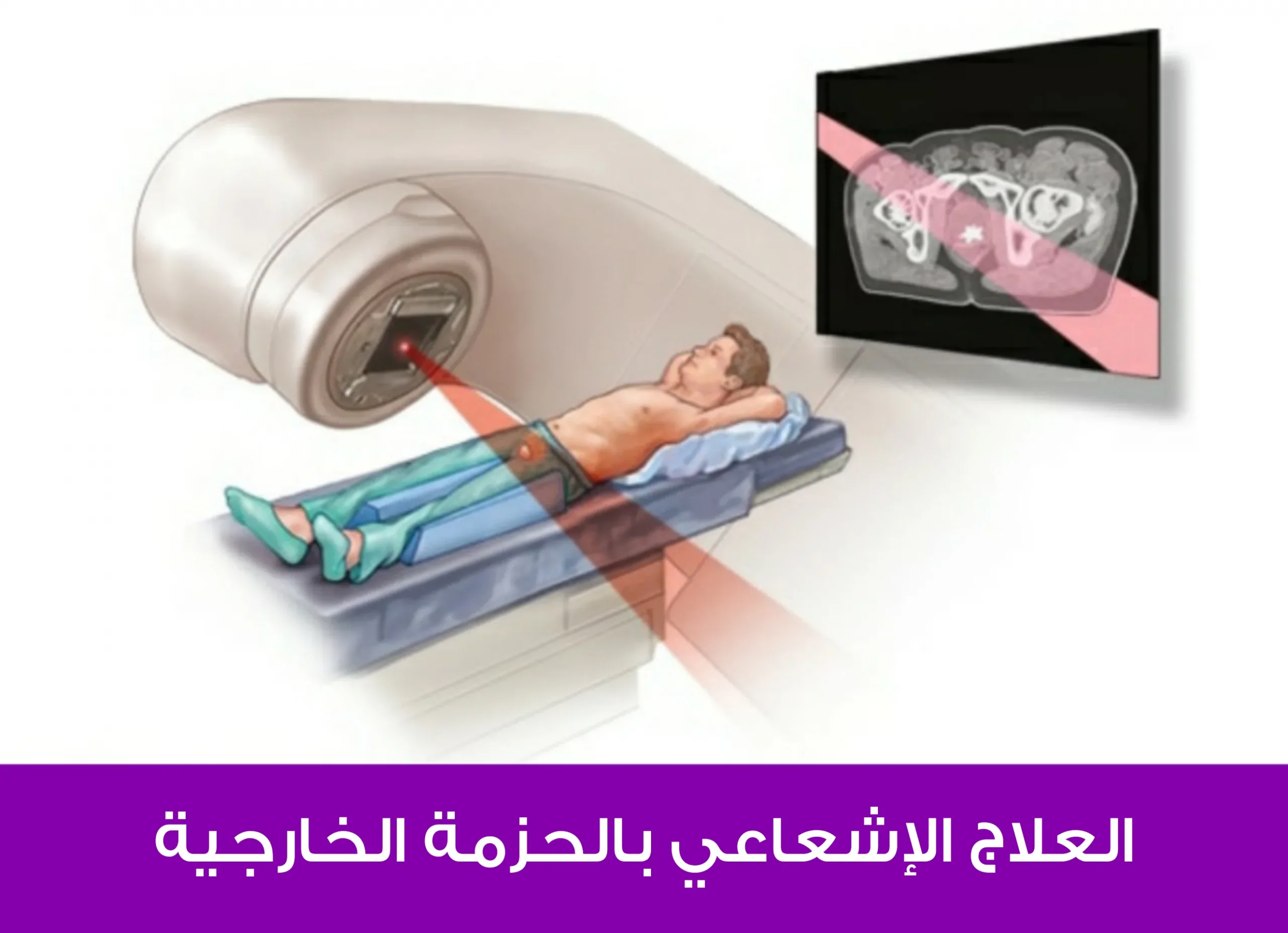
- العلاجات الجهازية: قد يوصي طبيبك بعلاجات جهازية إذا انتشر السرطان خارج غدة البروستاتا. تشمل هذه العلاجات العلاج الكيميائي والعلاج بهرمونات الحرمان من الأندروجين والعلاج المناعي.
- العلاج البؤري: العلاج البؤري هو شكل جديد من العلاج يركز على علاج الجزء المصاب بالسرطان فقط من البروستاتا. قد تتمكن من تجربة هذا العلاج إذا كان السرطان لديك لم ينتشر بعد. تشمل خيارات العلاج البؤري الموجات فوق الصوتية المركزة عالية الكثافة (HIFU) والعلاج بالتبريد والاستئصال بالليزر والعلاج الضوئي.
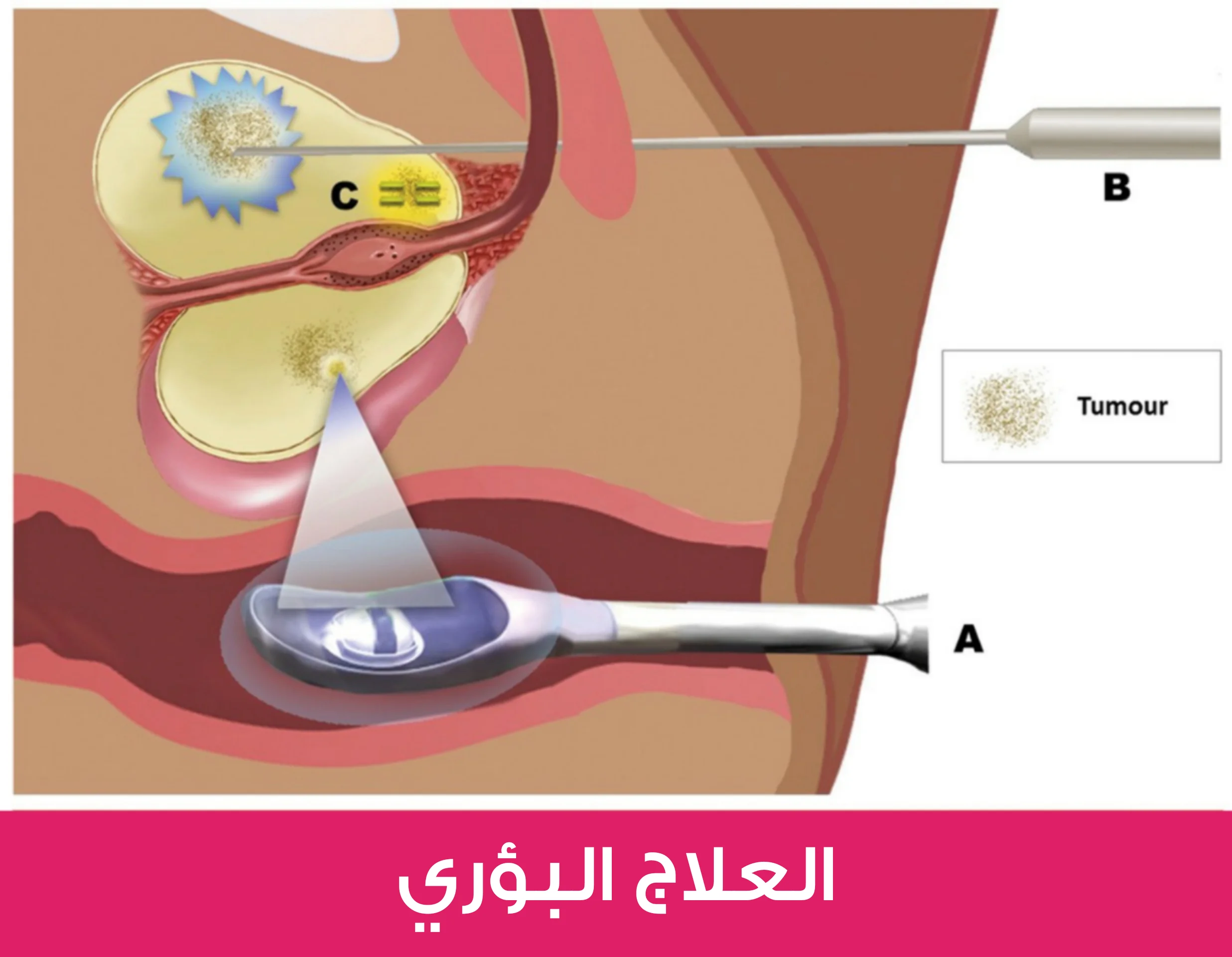
- استئصال البروستاتا: هذا الإجراء الجراحي يزيل غدة البروستاتا المريضة. يمكن للجراحين إجراء استئصال البروستاتا بالمنظار واستئصال البروستات النهائي الروبوتي من خلال شقوق صغيرة في البطن. هذه الإجراءات أقل توغلاً من استئصال البروستاتا النهائي المفتوح، والذي يتطلب شقًا أكبر في البطن، على الرغم من أن كلاهما فعال في إزالة السرطان.
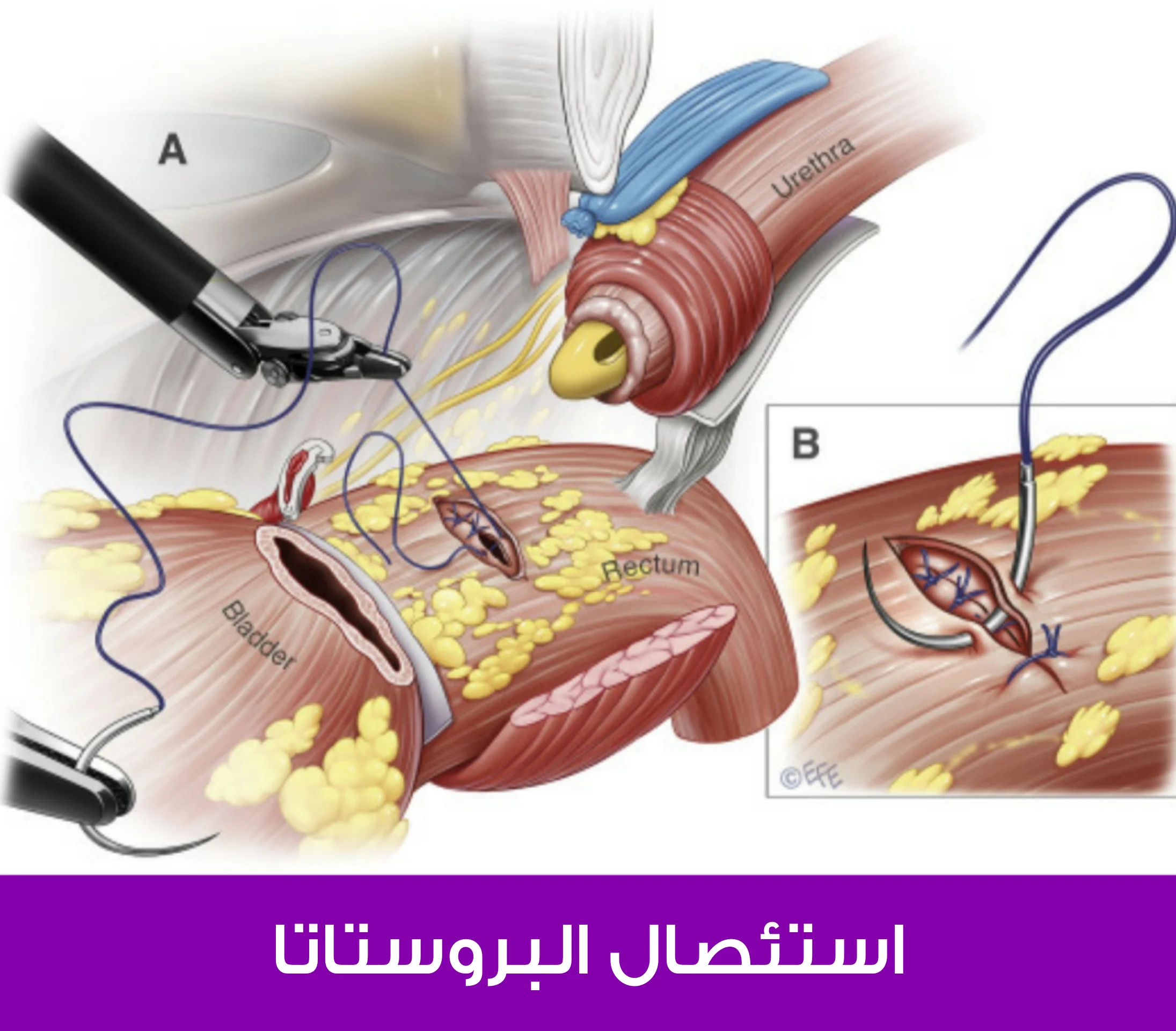
ما هي الآثار الجانبية لعلاج سرطان البروستاتا؟
يمكن أن تؤثر بعض علاجات سرطان البروستاتا على المثانة وأعصاب الانتصاب وعضلة العضلة العاصرة التي تتحكم في التبول. تشمل المشاكل المحتملة ما يلي:
- سلس البول: يعاني بعض الرجال من سلس البول. قد يتسرب البول عند السعال أو الضحك، أو قد تشعر بالحاجة الملحة لاستخدام الحمام حتى عندما لا تكون مثانتك ممتلئة. يمكن أن تتحسن هذه المشكلة خلال أول 6 إلى 12 شهرًا بدون علاج.
- ضعف الانتصاب (ED): يمكن للجراحة والإشعاع والعلاجات الأخرى أن تلحق الضرر بأعصاب الانتصاب وتؤثر على قدرتك على الانتصاب أو الحفاظ عليه. يستعيد بعض الرجال وظيفة الانتصاب في غضون عام أو عامين (في بعض الأحيان قبل ذلك). في غضون ذلك، يمكن أن تساعد الأدوية مثل سيلدينافيل (فياجرا®) أو تادالافيل (سياليس) عن طريق زيادة تدفق الدم إلى القضيب.
- العقم: يمكن أن تؤثر العلاجات على قدرتك على إنتاج أو قذف الحيوانات المنوية، مما يؤدي إلى العقم عند الذكور. إذا كنت تعتقد أنك قد ترغب في إنجاب أطفال في المستقبل، فيمكنك الاحتفاظ بالحيوانات المنوية في بنك الحيوانات المنوية قبل بدء العلاج. أما في حال رغبت بالإنجاب بعد أن تكون قد خضعت للعلاج، فقد تحتاج إلى استخراج الحيوانات المنوية مباشرة من أنسجة الخصية وزرعها في رحم المرأة.
ما هي التوقعات بالنسبة للأشخاص المصابين بسرطان البروستاتا؟
نظرًا لأن سرطان البروستاتا يميل إلى النمو ببطء، فإن معظم الرجال يموتون بسبب آخر غير هذا المرض. الاكتشاف المبكر هو المفتاح لتحقيق نتائج أفضل. يعيش جميع الرجال المصابين بسرطان البروستاتا الموضعي تقريباً (من 97٪ إلى 98٪) لمدة خمس سنوات على الأقل بعد التشخيص إذا كان المرض لم ينتشر بعد خارج البروستاتا. أما عندما ينتشر السرطان خارج البروستاتا، يستمر بقاء ثلث الرجال على قيد الحياة بعد خمس سنوات.
كيف يمكنني منع سرطان البروستاتا؟
يصاب معظم الرجال بسرطان البروستاتا مع تقدمهم في السن دون سبب معروف. الوقاية غير ممكنة. ولكن، إذا كان لديك بعض عوامل خطر الإصابة بسرطان البروستاتا، فقد يساعد اتخاذ هذه الخطوات في تقليل المخاطر والتمكن من السيطرة على المرض مبكرًا:
- إجراء فحوصات منتظمة للبروستاتا.
- الحفاظ على وزن صحي.
- ممارسة الرياضة بانتظام.
- تناول نظام غذائي مغذي.
- الإقلاع عن التدخين.
تحدث مع طبيبك
يُعد سرطان البروستاتا خطرًا على جميع الرجال مع تقدمهم في العمر، ولكن إذا تم اكتشافه وعلاجه مبكرًا، فإن التوقعات تكون جيدة بشكل عام. لذلك مع تقدمك في العمر، تأكد من إجراء محادثات مفتوحة مع طبيبك حول المخاطر التي قد تتعرض لها.
إذا كانت لديك أي أعراض تعتقد أنها قد تكون سرطان البروستاتا، فتحدث إلى طبيبك على الفور. وحتى إذا لم تكن لديك أعراض، ففكر في اتباع أسلوب حياة صحي لتقليل مخاطر إصابتك.
يمكن أن يساعد اتباع نظام غذائي غني بالخضروات والأسماك وقليل من منتجات الألبان واللحوم الحمراء كاملة الدسم، مع خطة تمارين معتمدة من قبل طبيبك، في تقليل خطر الإصابة بسرطان البروستاتا، فضلاً عن تعزيز صحتك بشكل عام.
يبقى مركز بيمارستان الطبي خيارك الأول للعلاج في تركيا.
نوجهك لأفضل الاختصاصين الخبراء بكافة المجالات، نكسر حاجز اللغة أطباء متخصصين عرب سيساعدونك في التواصل مع طبيبك، نساعدك بحجز الموعد بأهم وأحدث المشافي في تركيا ، نقدم خدماتنا لتأمين حجز فندقي لك و لمرافقينك إضافة للمواصلات للتنقل، نساعدك في تأمين تأشيرة السفر لك مجاناً.
نقدم خدماتنا على امتداد تركيا ، فالمكان الأفضل بتقديم العلاج لك هو وجهتنا.
نرافقك خطوة بخطوة نحو الشفاء.
استشارات مجانية على مدار الساعة.
لا تتردد بالتواصل معنا، مركز بيمارستان عائلتك في تركيا
